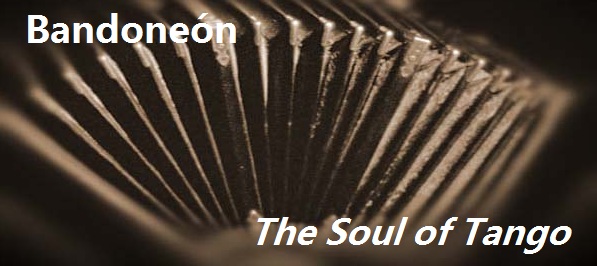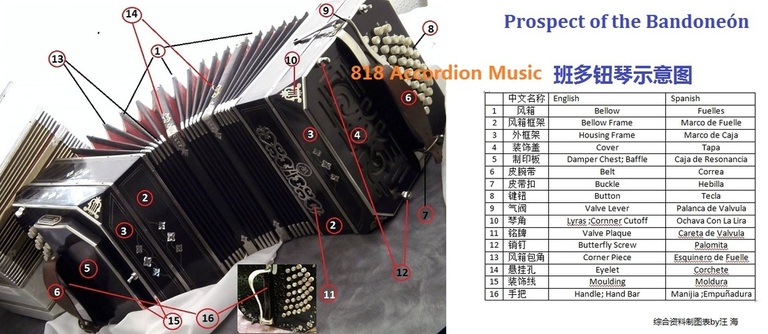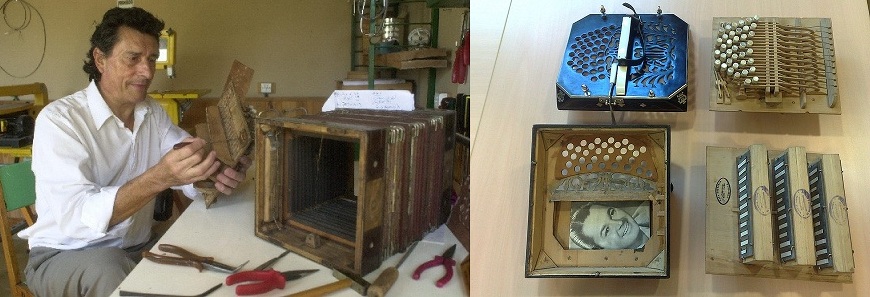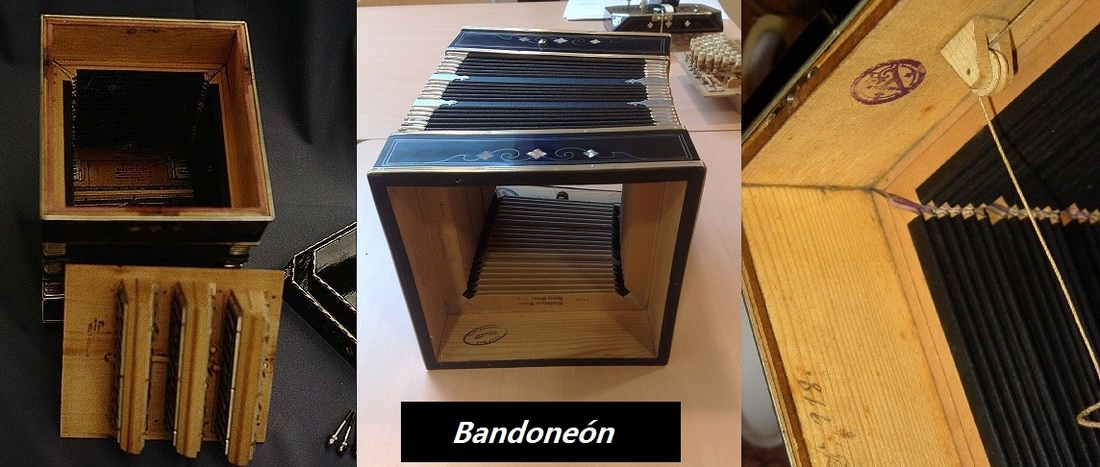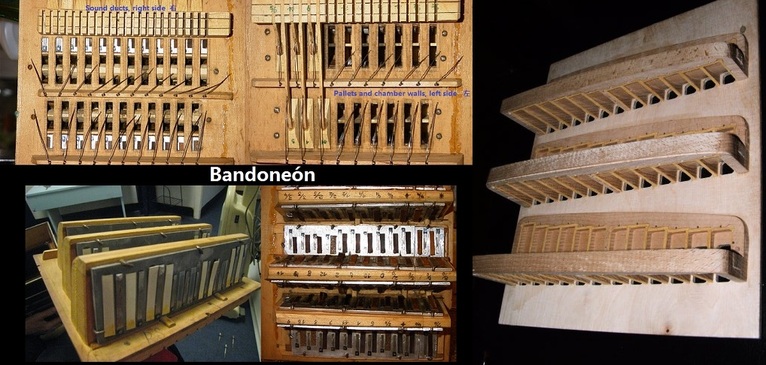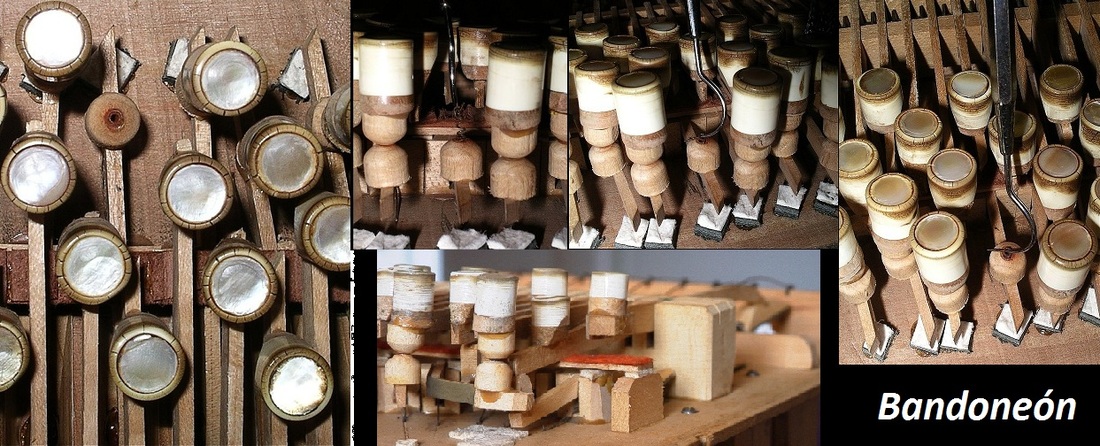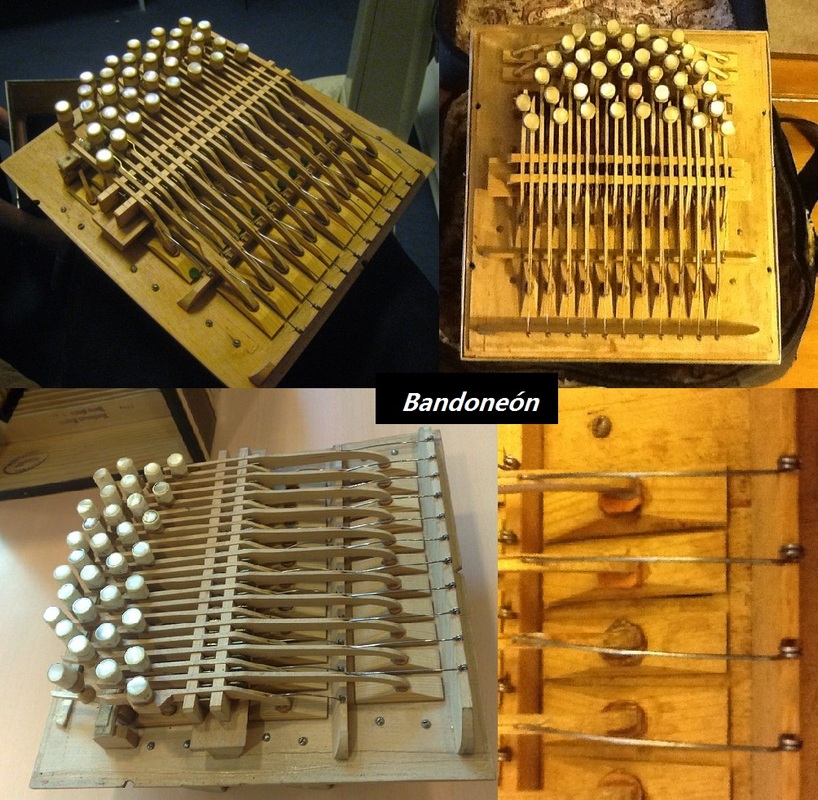As an accordionist who loves Astor Piazzolla and his tango music, I always dream to be able to perform his wonderful compositions in a "Piazzolla Way", on the real tango instrument: bandoneón.
I was lucky, by chance, I got an restored and well-tuned pre-war “Doble-A” bandoneón from Montevideo, Uruguay. Thus, I decide to create this page to share all things I learned about this instrument as I start my bandoneón journey. Suggestions for correction and improvement will be gratefully received.
Special thanks to the great musician, bandoneónist Ricardo Souza Melo for his kindness and help. He educated me with his valuable experience and encouraged me to finally start my journey.
I was lucky, by chance, I got an restored and well-tuned pre-war “Doble-A” bandoneón from Montevideo, Uruguay. Thus, I decide to create this page to share all things I learned about this instrument as I start my bandoneón journey. Suggestions for correction and improvement will be gratefully received.
Special thanks to the great musician, bandoneónist Ricardo Souza Melo for his kindness and help. He educated me with his valuable experience and encouraged me to finally start my journey.
Introduction
The first bandoneón was made by Heinrich Band in Germany, 1850. The idea of making this instrument was based on concertina,another accordion-like instrument. In the late 19 century, bandoneón was taken to Argentina and other Latin America countries by German sailors, and was soon incorporated into the local tango music.
There are many types of bandoneón that differs with there systems. Only the 142-tone 71-key(right hand 38 buttons, left hand 33 buttons) bandoneón is recognized as the "Argentinian Tango-Layout" .Just bear in mind that AA and ELA pre-war made bandoneón are the best instruments we can find for Argentine tango. To have a look at the big historical picture of bandoneón, you can read more by click here.
For this page, I will only focus on the 142-tone 71-key Rheinisc system bandoneón for tango, although the German mainly use 144-tone 72-key Einheit system for their folk music .
Here are some pictures showing prospect of the bandoneón and its inside structure and parts you need to know.
For this page, I will only focus on the 142-tone 71-key Rheinisc system bandoneón for tango, although the German mainly use 144-tone 72-key Einheit system for their folk music .
Here are some pictures showing prospect of the bandoneón and its inside structure and parts you need to know.
The Rheinisc system bandoneón is classified as diatonic instrument. For each key, or you say button, when pull bellow out and push in, it plays different notes, that's why a 71-key bandoneon has 142 tones. Here are pictures showing how a single key been connected to two reeds.
